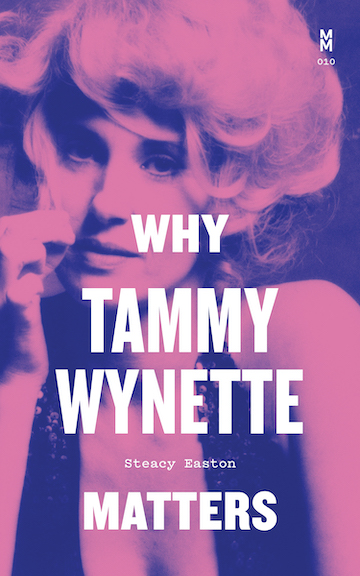Captive Audience
The protagonist of Laura Lippman’s new thriller hasn’t moved as far beyond the past as she believes
Laura Lippman’s new crime novel, I’d Know You Anywhere, begins where most mysteries end. The killer has been caught and incarcerated; apparently, justice has been served. Twenty years after he raped and murdered a series of young women in suburban Washington, D.C., Walter Bowman sits on Death Row awaiting execution, his appeals finally exhausted. His last request is to make contact with the one girl he kidnapped but, unlike the unfortunate others, did not kill.
At first, Eliza Benedict has no interest in speaking with Bowman. Just fifteen when she was kidnapped, she has persevered in creating a new identity—shortening her name from Elizabeth and keeping her victimhood a secret from her children—so that no one except her husband Peter knows about her traumatic past. In a letter sent via a third party, Bowman claims he was able to track her down after seeing her picture in the society pages of Washingtonian magazine. His initial overtures, though creepy (“I’d know you anywhere”), seem innocuous. Nevertheless, Eliza understandably spurns him.
As Bowman persists, however, Eliza begins to fear he might expose her involvement in his “killing spree,” forcing her to re-live in public an episode that she had hoped to keep buried forever. So she relents and agrees to speak with Bowman over the phone, beginning a process that will force her to re-assess her own role in the thirty-nine days she spent as his prisoner.
 Lippman slowly builds the novel’s tension in the first section as the chapters alternate between the present of 2005 and the fall of Bowman’s crimes in 1985. After receiving his letter, Eliza occupies herself caring for a cranky teenage daughter and a sensitive grade- school-age son, but she can’t shake the sense of the past. The older narrative begins as young Eliza (then Elizabeth) is walking through woods near her home. When she stumbles upon Bowman as he is burying a victim, he snatches her and takes her on the lam with him. She believes him when he threatens to kill her entire family if she disobeys.
Lippman slowly builds the novel’s tension in the first section as the chapters alternate between the present of 2005 and the fall of Bowman’s crimes in 1985. After receiving his letter, Eliza occupies herself caring for a cranky teenage daughter and a sensitive grade- school-age son, but she can’t shake the sense of the past. The older narrative begins as young Eliza (then Elizabeth) is walking through woods near her home. When she stumbles upon Bowman as he is burying a victim, he snatches her and takes her on the lam with him. She believes him when he threatens to kill her entire family if she disobeys.
In the novel’s second half, two other major characters emerge: the mother of Bowman’s final victim, and the prisoner-rights advocate who is trying to persuade the courts to stay Bowman’s execution a record-breaking third time. Lippman devotes several chapters to each of them, giving the novel a wider breadth of perspective. In the author’s note at the end of the book, Lippman admits having “definite ideas about the death penalty” but does not intend this novel to be a “polemic”: “I did my best to make sure that every point of the triangle—for, against, confused—was represented by a character who is recognizably human.”
A polished veteran of mysteries (this novel is her sixteenth), Lippman knows how to propel the story forward. She packs forty-six short chapters into this accessible book, each one adding new details to the plot and new facets to the characters. She frequently ends chapters by dangling new bits of information, teasing readers and then satisfying them quickly as she builds a complex picture of Bowman’s warped mind and of Eliza’s distressed acquiescence.
 The rapid pace of the narrative does not preclude fine, quiet moments when Lippman slows down to observe domestic nuances or psychological subtleties. When Elizabeth tries to persuade Walter to let her go, promising him that she won’t turn him in, he knows that she isn’t telling the truth. Her face, Walter thinks, isn’t exactly “an open book,” which “was only words on the page”; rather, it’s like “fish in an aquarium, all her thoughts and feelings on display, but moving kind of lazily, not in a rush to get anywhere.”
The rapid pace of the narrative does not preclude fine, quiet moments when Lippman slows down to observe domestic nuances or psychological subtleties. When Elizabeth tries to persuade Walter to let her go, promising him that she won’t turn him in, he knows that she isn’t telling the truth. Her face, Walter thinks, isn’t exactly “an open book,” which “was only words on the page”; rather, it’s like “fish in an aquarium, all her thoughts and feelings on display, but moving kind of lazily, not in a rush to get anywhere.”
The questions this story evokes in the reader are the same questions that Eliza continues to ask herself twenty years later. Why didn’t she try harder to escape from Bowman? Why didn’t she warn his next victim, the blonde and beautiful Holly, against getting into Bowman’s truck? When Bowman ordered Eliza to go into McDonald’s for food, why didn’t she reveal to the clerks that she and Holly had been kidnapped? Couldn’t she have saved herself and Holly? Finally, as the prosecutor asks her during the preparations for Bowman’s first trial, “why do you think Walter kept you alive? Why did he kill every girl but you?” At the time, Eliza could not supply an answer; twenty years later, she learns the truth.
In the present-time story line, the looming question is why Eliza would agree to meet with Walter Bowman in person. What does she have to gain from the ordeal of seeing her tormentor again? Is she doing it, as she claims, for the good of the families whose daughters’ disappearances were never solved, or does she have her own reasons for seeing him? Readers are also led to wonder if Bowman possesses a secret that could destroy Eliza’s cherished belief in her own innocence.
As the narrative builds up steam, some deeper thematic issues get truncated in favor of the case’s particulars. Still, Lippman manages to develop an implicit argument about the psychology of kidnap victims. Bowman himself doesn’t understand why Eliza “so readily” accepts his dominion. What he doesn’t know is that, long before fate crashed them together, Eliza’s passivity in the face of threatened violence is a natural extension of certain facts about her childhood.
As Eliza admits, “she couldn’t imagine escaping at all. … She dreamed of rescue, hoped for it, prayed for it, but she believed it would have to be something that happened to her, not because of her.” For years this meekness has been a source of shame. The moral lesson that Eliza learns at the end of this taut, satisfying novel allows her to reconcile her own addled adolescent self with the strong woman she has become.
Laura Lippman will read from I’d Know You Anywhere at Davis-Kidd Booksellers in Memphis on October 7 at 6 p.m.


